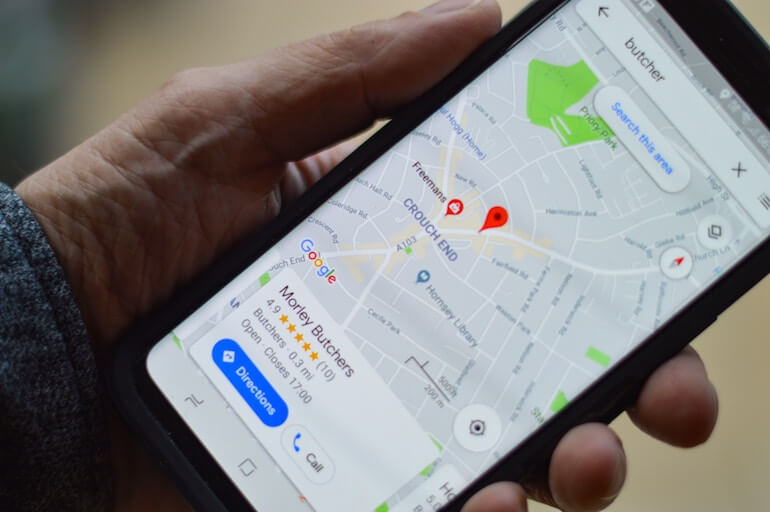Brick-and-mortar businesses depend heavily on foot traffic and local shoppers. In a cutthroat retail world, physical businesses need a competitive edge.
Paid search ads can be a great way to give you that edge and boost your revenue. However, using them effectively to get potential customers to walk through your doors after an online visit isn’t easy.
When you can’t rely on e-commerce purchases through your website, you need to plan carefully to ensure your investment in PPC will translate to in-store sales.
Local PPC for Local Business
An e-commerce business that can ship their products anywhere may be comfortable targeting the entire United States with their PPC ads—or even creating an international ad campaign. A business that relies on the local populace can’t do the same; a user across the country isn’t likely to travel hundreds or thousands of miles to visit your store. The result of a national PPC ad campaign would be wasted spend and lost revenue. This might cause a brick-and-mortar store owner to think PPC isn’t worth it.
In reality, PPC is a great tool for brick-and-mortar stores. You just need a different strategy.
In my experience as a PPC strategist, I’ve come to realize that the typical broad-reach targeting one would find in many paid search accounts isn’t worth it for local retail businesses. If you depend on a customer’s physical presence in-store, you need a local paid search strategy.
6 Tactics to Dominate Local PPC
Local PPC is the terminology we use in this industry to refer to strategies and tactics geared toward taking advantage of local populaces only. Having an excellent local PPC strategy goes far beyond adjusting your location targets. If you want to excel and beat your competitors in this space, you need to use every tool at your disposal.
Here are six tactics you should use to create a dominant local paid search strategy.
1. Hyper-Local Campaign Targeting
If you depend on local foot traffic, hyper-local geographic targeting is a must. Google Ads offers smart geo-targeting options for local PPC campaigns. This allows you to limit display ads to customers in your approved locations. For example, if you have a store in Brooklyn, you can create PPC campaigns targeting potential customers only in the immediate vicinity of Brooklyn.
Google allows you to use zip code, neighborhood, town, and city boundaries to target ads to specific locations. Google even allows you to draw a custom-size radius centered on your store’s address.
You can also prevent your ads from showing up in certain locations by adding negative geographic targets (although you are not allowed to exclude custom radii).
Before launching your campaigns with your geographic targets, however, double-check that your ad delivery settings are set specifically to users in your targeted locations. This will cut down on erroneous clicks, increasing ad relevance while preserving your budget.
2. Location Extensions
Location extensions are designed to increase relevant foot traffic through PPC. The extension uses your Google My Business (GMB) listing to display your location on Google Maps directly on the SERP. These extensions are eligible to show whenever your text ad generates an impression.
This is not to say they’re guaranteed to show every time. There is no way for us to force Google to show location extensions, but having them eligible to show is better than nothing.
If you want to use location extensions for your Google Ad campaigns, you must have a Google My Business listing. Link your GMB account with your Google Ads account and you’re good to go.
I know Google rules the market, but other PPC platforms also offer location extensions. If you’re running campaigns with Bing Ads, for example, you can create location extensions manually or import them from Google Ads using Bing’s Editor tool.
3. Call Extensions
Call extensions display your phone number directly below your text ad on the SERP. This option allows users to call you directly from the SERP, rather than requiring them to click through to your site. This is a great tool when someone is looking for quick information.
Google Ads also allows you to use a dynamically generated forwarding number so you can track how many phone calls you’ve received via your ads. You can track these directly within the user interface and even opt calls into your conversion metrics. As long as you’re using a Google forwarding number, you can set specific types of calls (for example any that lasts at least two minutes) to count as a conversion for your campaign. This same extension type can be found in Bing Ads as well, including the option to use a forwarding number and track conversions.
These extensions not only make life easier for potential customers, but they also give you additional information about which campaigns are performing best. If you have a phone number potential customers can call, include it as a call extension to get the most out of it.
4. Google Local Campaigns
Google rolled out Local Campaigns mid-2018 as a campaign type specific to Google Maps. This automated offering uses Google’s powerful AI to drive in-store visits and count those store visits as conversions. They look a lot like location extensions and are eligible to appear in Google Maps, in Google search through Google Maps or GMB, on YouTube, and within Google’s display network.
Unlike location extensions, which accompany your text ad, local campaign ads are the ad unit itself. Once you set the campaign budget, Google generates these ads for you automatically and displays them across the networks listed above.
When a customer actually visits your store, Google is then able to use that visit as a conversion. As with location extensions, you must have GMB and link it with your Google Ads account.
5. Yelp Enhanced Profiles
Yelp is a fantastic way to drive local traffic. Yelp users are generally lower down the funnel and more likely to visit your store. However, free Yelp listings lack the quality control you need to take advantage of those low-funnel visitors on your store page.
Make the most of your listings with Yelp’s paid Enhanced Profiles. This feature gives you more control and allows you to add a picture slideshow, a video, and a customized call to action on your profile. Enhanced Profiles also prevent your competitors from buying ad space on your store page.
You will need to pay to access Enhanced Profiles, but with this option, you can better maintain user attention by standing out from your local competition. Enhanced profiles can be utilized for a flat monthly fee. If you choose to advertise within Yelp itself, the monthly rate may decrease depending on how much you spend on Yelp ads.
6. Google Local Service Ads
Service providers like locksmiths, plumbers, and cleaning services have different business goals than product retailers. Instead of selling a product, these businesses rely on appointments and bookings to drive revenue.
Service-based businesses can implement Google’s Local Service Ads. These ads drive leads and bookings directly from the SERP. Although Local Service Ads are available for only a specific set of service industries and (as of early 2019) certain markets within the United States and Canada, they’re an incredible local PPC tactic.
Local Service Ads show up at the top of the SERP, where users can contact your business directly. You can reply to customer messages, track bookings, and manage leads right from the Local Services app. Keep in mind that Google expects Local Services advertisers to reply promptly to all leads. Delays will decrease your ranking potential, so make sure you can handle the influx of leads before implementing this tactic.
The onboarding process for this ad type can also be tedious. All businesses that opt-in are required to submit to a background check and a business entity verification. Furthermore, Google requires proof of insurance for every location that is verified and displayed to users via one of these ads. But if you qualify for Local Services Ads, they can be a powerful lead generation tool.
Embrace the Power of Local PPC
Brick-and-mortar businesses face unique challenges when creating a PPC campaign. Use the six tactics above to implement a robust local PPC strategy designed to deliver real results.
Say goodbye to overly broad location targeting and generic text ad campaigns that don’t leverage your physical location. Embrace the power of local PPC, attract new customers near you, and grow your business.




